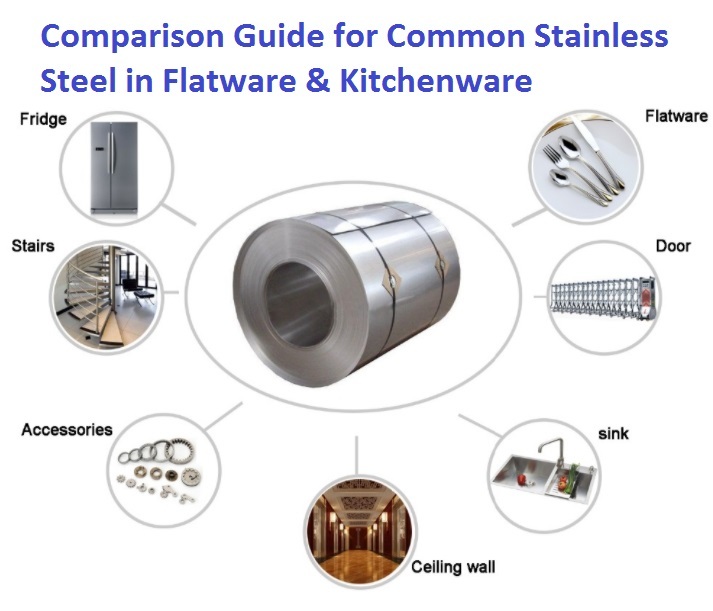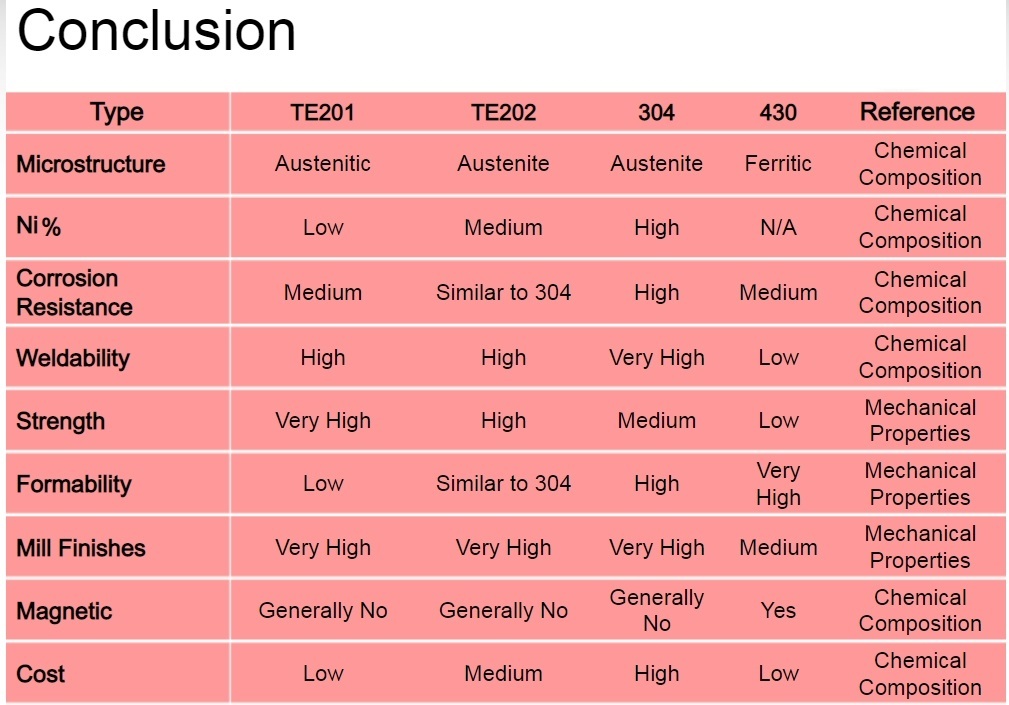Common Stainless Steel Materials for Cutlery Tableware & Kitchenware

Most common household stainless steel include SUS304 (18-8 or 18-10), SUS316, SUS430 (18-0). All 3 types above are non-toxic stainless steel material, able to withstand vinegar & citric acid for kitchenware & dining use.
However, the hardness of above products cannot be compared to 400 series, so they are not suitable for kitchen knife or dining knife.
For the most durable quality knife, we recommend using 440 series (US, Japan standard) or X45CrMoV15 (German standard).
Generally, US & JP standards use the same numbering system, with JP type starting with SUS (ex. SUS304, SUS316), and US type starting with AISI (ex. AISI304, AISI316). However, for European standards there are 2 types. For example, AISI304 is equivalent to X5CrNi18-10 or 1.43, and AISI316 is equivalent to X5CrNiMo17-12-2 or 1.4401.

Below we list some of the common questions from consumers:
Is larger number better?
No. Numbering systems only reflects the steel properties. Which steel is better will depend on what the use is for.
For example, 430 is larger than 304, but the corrosion resistance is not as good. Also, there are 500 and 600-series stainless steel, but they are not ideal for tableware & kitchenware use.
Is more expensive material better?
No. Although 300-series mainly consists of chromium & nickel, not all types are ideal for kitchenware use. For example, corrosion resistance ranks from the highest to lowest is: 316, 304, 430. Normally 316 is not used in tableware because of the cost. It is also not suitable for making steak knife or dinner knife because it cannot retain hardness and will become dull after several use.
What is the difference between 304 & 316? Is 316 18/10 quality?
316 is more corrosion resistant than 304 because it contains molybdenum. 304 is commonly known as food-grade stainless steel, while 316 is known as surgical-grade stainless steel.
18-10 is also not 316 stainless steel. 18/8 & 18/10 both belong to 304 stainless steel family.
What is the properties of 430 stainless steel? Will it rust? Can it be used after oxidation?
430 has magnetic properties and can be used cookware, kitchen sink and fridge exterior. The prices are cheaper than 304 & 316.
It can also be used to contact with acidic food & heat, even though constant contact will enhance oxidation process (e.g. rust). It is still safe for food use after oxidation, but it will be less aesthetically appealing.
Can magnets be used to differentiate stainless steel types?
Depends. 200 & 300 series don’t have magnetism, but 300 series has small weak magnetism. On the other hand, 400-series metals have magnetisms.
Below is summary of the main stainless steel materials used in flatware & kitchenware:
|
Material |
Also Known As |
Magnetism |
Properties |
Application Use |
|
304 |
18-8, 18-10, food-grade stainless steel |
No |
|
Kitchenware, flatware, machinery. Not good for knife use. |
|
316 |
Surgical grade stainless steel |
No |
|
Kitchenware, flatware, surgical tool. Not good for knife use. |
|
430 |
|
Yes |
|
Kitchenware, flatware, dishwasher, scissor, knife |
|
440 |
|
Yes |
|
Ideal for knife production use. |
|
201, 202 |
Industrial stainless steel |
No |
|
Can be used for kitchenware & flatware. Not as good as 300 or 400 series |
|
X45CrMoV15 |
German stainless steel |
Yes |
|
Ideal for knife production use. |

For any kitchenware, flatware or knife inquiry or projects, please contact our specialists for more information.

